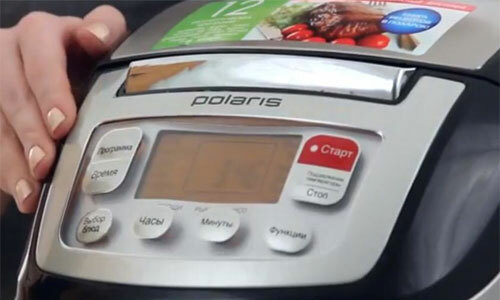Progress does not stand still, and every day more and more technology comes to help humanity in solving both workers and everyday situations. One of the last such "rescuers" for housewives are multivark.

Read also:
- Video: how to choose a multivariate - control purchase
- Which is better: microwave or multivark
These compact multifunctional devices are able to cook almost any dish with minimal human participation. With the help of multivarkers you can cook porridges or pasta, stew vegetables or fruits, fry meat dishes or potatoes, bake a cake or pie and much, much more.
But now the "almighty" kitchen appliances have brothers - multivarkers, pressure cookers. What is the functionality of those and others and what are their differences, let's try to understand with you.
The principle of operation of multi-cups and multi-pressure cookers

Both these devices operate on the same principle with a few minor differences. In one and the other multivarkas there is a removable pan made of heat-resistant non-stick coating. It is in this capacity that all food is cooked, and in such a way that practically all useful substances remain in it.
- Article in the topic: Which bowl for the multivark is better
Excess steam released during cooking leaves through special valves, and the cooking mode is controlled by a microprocessor. The amount of electricity that is consumed in cooking in these multivars is much less than when performing the same tasks on the electric stove. The sealed lid allows you to leave food for a time cooked in a pan of a multivarquet and not be afraid that the latter will become airborne.
In addition, you can lay all the necessary products in a pan and set the timer at the right time: left in the morning, returned in the evening, and in the multivarquet - a ready dinner. All this is common to both types of instruments, however, it takes much longer to prepare meals in a multivarquet than to prepare the same dishes in a multi-pressure cooker.
This is due to the fact that the first cooking is carried out solely under the influence of temperature, and secondly - the temperature and pressure. To understand what is best: a multivarker or a multivark-pressure cooker, you need to consider the merits and demerits of each.
- Read also: What are the types of multivariate
Advantages and disadvantages of multivarkers and multi-pressure cookers
Cooking speed
Multivark: cooking is much slower here.
Multivark pressure cooker: due to the effect of pressure, this process is more active, however, when the food is warmed up or the cooking of fast food dishes, there is no particular difference, since the pressure cooker requires a considerable amount of time to "accelerate"( about 15-20 minutes).
Economy
Multivark: it is much cheaper than a pressure cooker.
Multivark pressure cooker: more expensive, but uses less electricity.
Quality of cooked dishes
Multivarka: allows you to cook meals so that they keep the maximum amount of vitamins and substances needed by the body.
Multi-cooker: in addition to the properties described above, it also has a more uniform temperature effect on the products cooked in the pressure cooker.
Features
Multivark: in this device you can cook almost any dish.
The multi-pressure cooker is characterized by more restrictions.
Ease of use
The multivarker can be opened directly when cooking.
The multivark pressure cooker also allows the lid to be opened at the time of cooking, but its pressure effect on the process is reduced to zero, and a certain amount of time is required until the device recovers.
- See also: Multivark - pros and cons
Based on all these properties of the multivark and multi-pressure cooker, it can be concluded that each of them is good in certain cases. If you are very limited in time and do not like to eat half-finished products, then the second one will suit you better. If you do not put these requirements in front of your electronic "assistant", then stop at an ordinary multivark - it is both more functional and less expensive.


